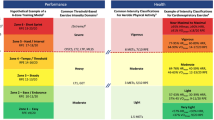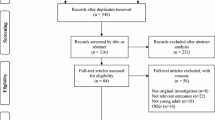Summary
Background
Quality of life late after heart transplantation is reported to be comparable with that of the general population. However, peak exercise capacity remained approximately 60% of what was normal between 1 and 10 years after transplantation. The gap between patients’ good quality of life and their impaired exercise tolerance is not yet explained. The purpose of our study was to examine the relation between quality of life and exercise- related variables in heart transplant recipients (HTR). Then, the results of these examinations were compared with those of patients having congestive heart failure (CHF), with the use of controls (C), respectively.
Methods
(Mean values±SD) 29 HTR 4.4 ± 2.1 years after transplantation, 29 CHF (NYHA II n = 22, III n = 7) and 29 C (age 54 ± 9, 61 ± 10, 56 ± 10 years, body mass index 28 ± 3, 29 ± 5, 28 ± 4 kg•m–2, body fat 25 ± 4, 27 ± 6, 26 ± 5%, respectively) performed cardiopulmonary exercise testing and were interviewed with the standardized German "Quality of life profile for chronic diseases" questionnaire.
Results
Peak oxygen consumption was impaired in HTR and in CHF compared with C (19.0 ± 4.5, 18.6 ± 4.3, and 30.2 ± 6.6 ml•min•kg–1, respectively; p < 0.01 vs. C each). HTR and CHF patients’ quality of life in the physical scores were both impaired (p < 0.05 or p < 0.01 vs. C, respectively), but HTRs have reported better scores than CHF (p < 0.05). In the psychological role, CHF was impaired against C (p < 0.05), and HTR scores were comparable with C. In social functioning HTR and CHF patients both showed reduced quality of life dimensions. The Pearson correlation analysis showed that quality of life in physical functioning was related to peak oxygen consumption (p < 0.001) and percentage of predicted workload (p < 0.001). Quality of life in the social and psychological domains showed no association to exercise-related values.
Conclusions
In HTR and in CHF, exercise testing variables were dominant predictors among the physical scales in quality of life, but not among social or psychological scales. Therefore, even late after heart transplantation, improving physical capacity should be a therapeutic goal with the intention of further increasing the quality of life.
Zusammenfassung
Neben einer reinen Verlängerung der Lebenserwartung spielt in den letzten Jahren die Frage der Lebensqualität nach Herztransplantation eine zunehmende Rolle. Aus früheren Untersuchungen werden diskrepante Befunde zwischen der objektiv ermittelten Leistungsfähigkeit sowie der subjektiv empfundenen Lebensqualität beschrieben. Mit dem Ziel einer langfristigen Verbesserung von Leistungsfähigkeit und Lebensqualität ist Fragestellung der vorliegenden Studie, diese Größen in einem Kollektiv herztransplantierter Patienten zu erfassen, mögliche Zusammenhänge herauszuarbeiten und gezielte therapeutische Maßnahmen zur psychischen und physischen Weiterentwicklung abzuleiten.
Methode
(Mittelwerte ± SD): 29 Patienten 4,4 ± 2,1 Jahre nach Herztransplantation (HTX), 29 Patienten mit Herzinsuffizienz (HI; NYHA II n = 22, III n = 7) und 29 Probanden einer Kontrollgruppe (K) (Alter 54 ± 9, 61 ± 10, 56 ± 10 Jahre, Body-Mass- Index 28 ± 3, 29 ± 5, 28 ± 4 kg•m–2; Körperfett 25 ± 4, 27 ± 6, 26 ± 5%) wurden mit einem ergospirometrischen Stufentest und mit dem standardisierten Fragebogen "Profil der Lebensqualität chronisch Kranker" untersucht.
Ergebnisse
Die maximale Sauerstoffaufnahme war bei HTX und bei HI vermindert im Vergleich zu K (HTX 19,0 ± 4,5, HI 18,6 ± 4,3 und K 30,2 ± 6,6 ml•min•kg–1; jeweils p < 0,01 vs. K). HTX und HI beschrieben eine reduzierte Lebensqualität in den physischen Profil- Dimensionen (p < 0,05 bzw. p < 0,01 vs. K), wobei die Werte der HTX besser waren als die der HI (p < 0,05 vs. K). In den psychischen Profil-Dimensionen ergaben sich keine Unterschiede. Die soziale Dimension "Zugehörigkeitsgefühl" war bei HTX vermindert (p < 0,05 vs. K). Der Vergleich physischer Dimensionen im Lebensqualitätsprofil mit funktionalen Variablen ergab mittlere Korrelationen (Pearson) zur maximalen Sauerstoffaufnahme (p < 0,001) und zur erreichten prozentualen Sollleistung (p < 0,001).
Schlussfolgerung
Für Patienten nach Herztransplantation oder mit Herzinsuffizienz sind kardiopulmonale Funktionsparameter und körperliche Leistungsfähigkeit dominante Prediktoren für die subjektiv eingeschätzte Lebensqualität. Bei Patienten nach Herztransplantation sollte die Steigerung der verminderten physischen Lebensqualität durch körperliches Training sowie die Verbesserung des sozialen Zugehörigkeitsgefühls als ergänzendes therapeutisches Ziel in der Langzeitnachsorge formuliert werden.
Similar content being viewed by others
Author information
Authors and Affiliations
Corresponding author
Rights and permissions
About this article
Cite this article
Tegtbur, U., Pethig, K., Jung, K. et al. Lebensqualität im Langzeitverlauf nach Herztransplantation. Z Kardiol 92, 660–667 (2003). https://doi.org/10.1007/s00392-003-0934-3
Received:
Accepted:
Issue Date:
DOI: https://doi.org/10.1007/s00392-003-0934-3




